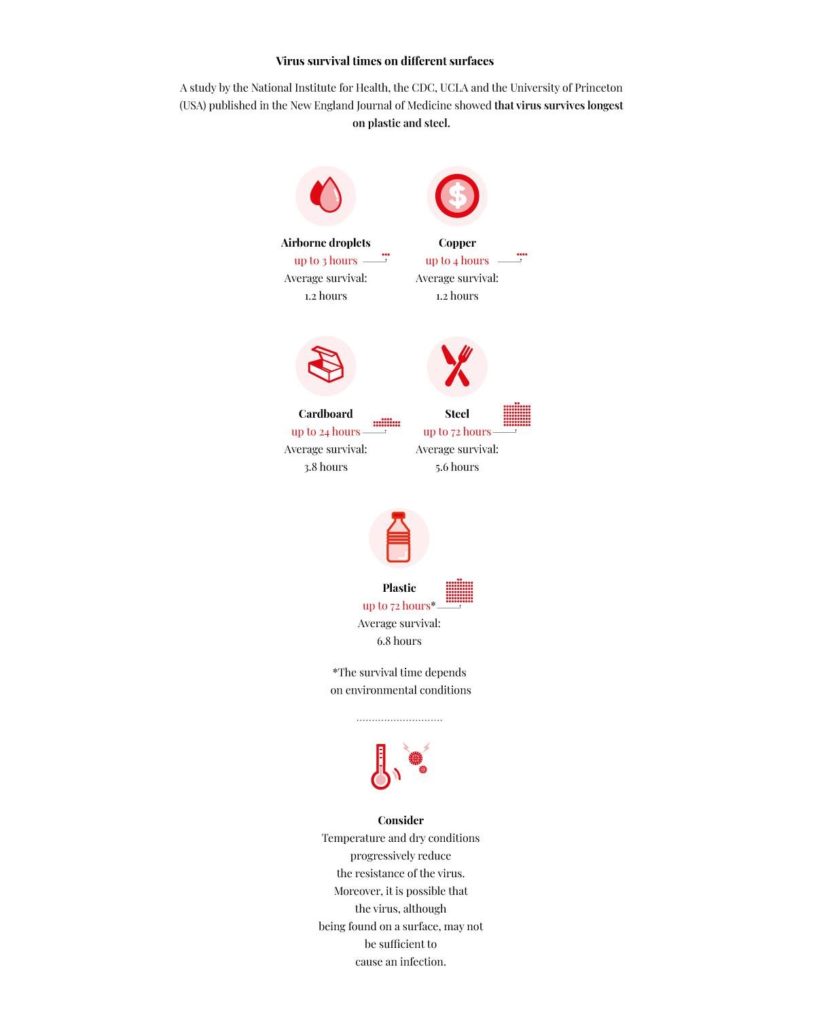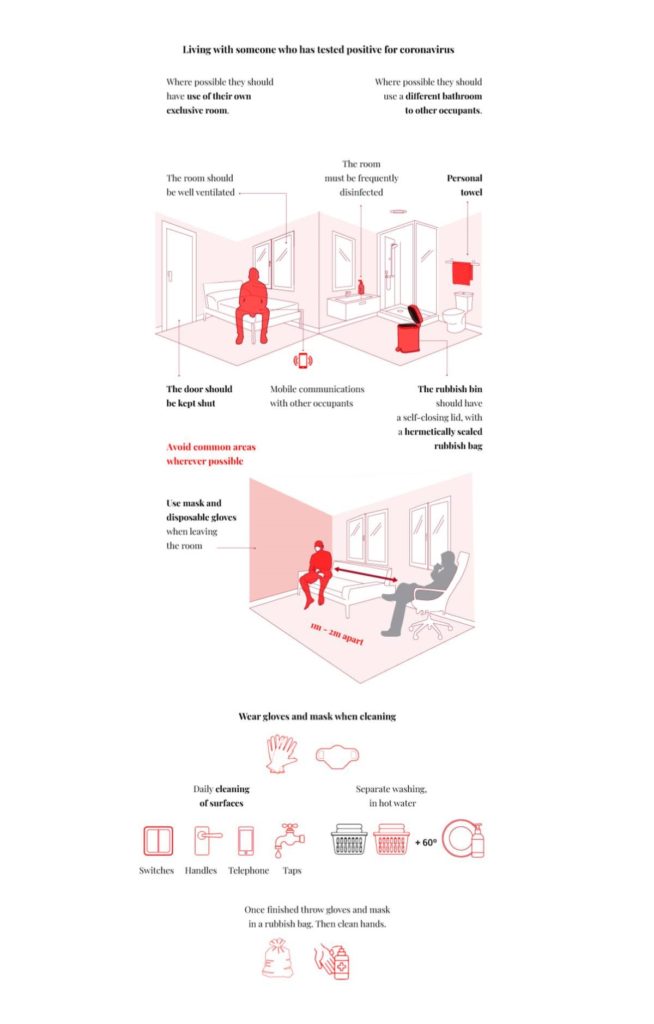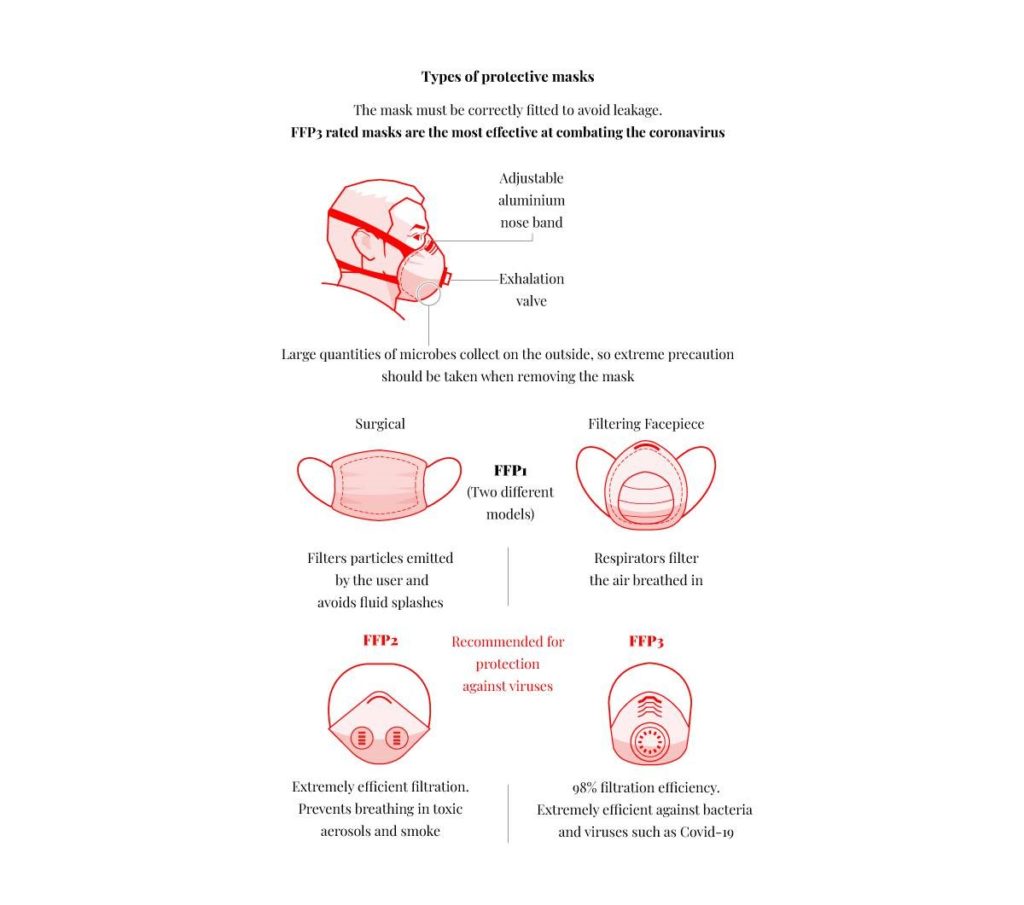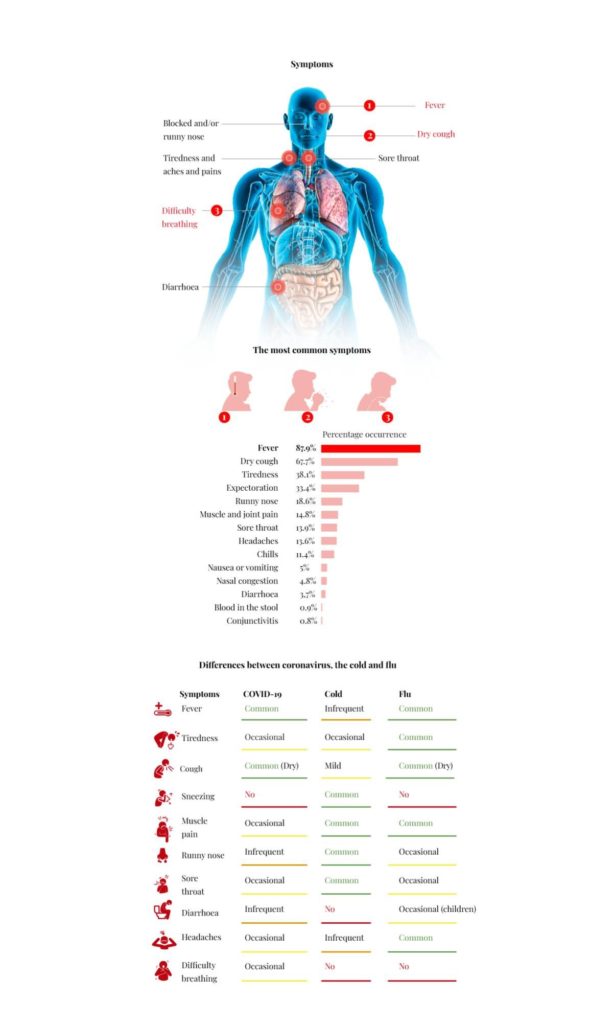
-
Coronavirus Outbreak in Andhra Pradesh: Latest Update Click here
-
Coronavirus Outbreak in India: Latest Map and Count. Click here
-
Coronavirus Update – Worldometer. Click here
-
Section I. Introduction and Background of COVID-19. Click here
-
Section II. Clinical Features, Diagnosis, and Treatment of COVID-19. Click here
-
Section III. Overall Impact of COVID-19. Click here
-
Section IV. General Guidelines of Infection Prevention and Control during COVID-19. Click here
-
Section V. Summery and Conclusion of COVID-19. Click here
-
COVID-19 and Dentistry. Click here
1. What is Covid-19?
The coronaviruses are a large family of viruses (the Coronaviridae) that can cause illnesses in animals (birds and mammals) and humans. In humans, prior to the current pandemic, six different viruses had been identified, all of which cause respiratory tract infections: four cause common colds, with the other two being MERS, Middle Eastern Respiratory Syndrome and SARS, Severe Acute Respiratory Syndrome. MERS appeared in Saudi Arabia in 2012, with the original host being camels, while SARS was first seen in China in 2002, with the origin being uncertain, but thought to be bats with the virus jumping to civet cats before reaching humans. The coronavirus causing the Covid-19 pandemic was first identified in Wuhan, China, in 2019.
2. How is Covid-19 spread?
Covid-19 is spread through contact with an infected person, even when that person has no signs or symptoms of the disease. The most common method of contagion is through droplets, expelled from the nose or mouth when the infected person sneezes, coughs or exhales. Inhaling these droplets, or touching the eyes, nose or mouth after touching surfaces or objects on which the droplets have landed, can lead to infection. Hence the recommendation to always maintain a distance of at least a metre (3 feet) from other people, which is the space in which these droplets can be found. The main route of infection is airborne. Covid-19 can also be caught from faeces, although the risk is thought to be lower, it is still vital to wash your hands after going to the bathroom and before eating. The WHO continues to investigate all possible methods of infection.
3. Methods to reduce the risk of infection
The principal measure is frequent handwashing – with soap and water or with an alcohol-based gel. The hands must be washed for at least 20 seconds, ensuring the soap makes good contact with all surfaces before the hands are fully rinsed. A distance of at least one metre must be maintained from other people, with particular caution being taken if someone is sneezing, coughing or has a temperature. It is important to avoid touching the eyes, nose or mouth; the nose and mouth should be covered with tissue paper when coughing or sneezing, or with the inside of the elbow where no tissue is available. Where tissue has been used it should be thrown away immediately and the hands washed. It is important to avoid gatherings of large groups. Any individual showing any symptoms of the disease should be isolated as much as possible until they recover, wearing a mask to avoid infecting others.
4. How long does the virus survive on different surfaces?
It is not yet known with absolute certainty how long the virus can survive on surfaces, although it appears to behave like other coronaviruses. According to studies carried out to date, the Covid-19 virus appears to be able to survive on surfaces for at least a few hours and up to several days, with the time dependant on the type of surface and the ambient conditions, including temperature and humidity. The maximum time the virus can survive in air-borne droplets is three hours; on a coin, four hours; on paper, one day; on kitchen utensils, up to three days and the same on plastic items (computers and mobile phones). To disinfect a surface dilute bleach should be used, with the hands being washed afterwards. To clean computers and mobile phones a 70% alcohol-in-water solution should be used to avoid damaging the item.

5. What is the incubation period of the virus?
The incubation period is the time from infection to the appearance of the first symptoms of the disease. For Covid-19, this period ranges from one to 14 days, depending on the age of the patient and the existence of underlying conditions, etc. The average incubation period is understood to be around five days, but the WHO is updating this information as more data comes to light.
6. What are the main groups at risk?
Although some 80% of people will recover from Covid-19 without any special treatment, some 16% will suffer severe symptoms and will have difficulty breathing. Older people and those who have an underlying medical condition, such as high blood pressure, heart problems or diabetes, have more chance of developing a severe illness. The number of high-risk groups is being added to continuously and also includes people suffering from chronic respiratory conditions, smokers, cancer patients and people who are immune suppressed.
7. Can we live with someone who has tested positive for Covid-19?
The best approach is to isolate the infected person as much as possible, giving them a room and a bathroom for their exclusive use, where possible. The room should be well ventilated, with a window and a door that can be closed. The room should have a rubbish bin, where possible with a closable lid and hermetically sealed rubbish waste disposal bag. The patient should limit their movements to the greatest extent possible, wearing a mask when leaving the room if required to do so, and ensuring they maintain a distance of 1 metre (3 feet) or more from other people, although it is preferable to communicate by mobile phone. All surfaces the infected person could have been in touch with should be exhaustively cleaned daily and the person who does so should wear gloves and a mask. The clothes worn by the infected person should be washed separately and any waste they produce thrown away in a separate rubbish bag.

8. Types of masks and their utility
In the absence of respiratory symptoms or caring for an infected person, there is no need to wear a medical mask. Disposable masks can only be used once and if used when there is no need to do so the mask is effectively wasted. The WHO recommends using medical masks sensible to avoid wasting them. If a person wearing a mask touches an infected surface and then removes the mask without washing their hands they can become infected. The only people who should always wear masks are health workers, carers of infected people and those showing symptoms, such as fever or a cough.

9. How do I know if I have caught the virus? Main symptoms and differences with the flu or colds
The main Covid-19 symptoms are fever, tiredness and a dry cough. Some patients also suffer aches and pains, nasal congestion, excess mucus, sore throat and diarrhoea. Some people also lose their sense of taste and smell. In the majority of cases, the symptoms are mild and progressively disappear. Some people have asymptomatic infections and will be infected with the virus without even knowing it. Where the patient has difficulty breathing or serious respiratory problems it is vital to get in touch with local emergency services and seek medical attention.

10. How do I know if I’ve been in contact with an infectious person?
Close contact is understood to have occurred when someone has been within two metres of an infected person for a sustained period of time. For this reason, it is vital to avoid large gatherings of people, avoid outdoor sport, stop taking pets out for lengthy walks and where possible not go shopping on a daily basis.
11. What should I do if I have symptoms or think I may have been infected?
If you have symptoms, call the medical services. They will tell you if you need to go to the health centre. Where you are told to self-isolate at home, make sure you have a permanent means of communication available and inform the medical services of any change in your symptoms. Try to reduce your fever if you have one, drink plenty of water, rest and walk around your room from time to time. If you live with other people, you should follow the self-isolating rules for 14 days from the start of the symptoms, always provided that at the end of that period you have no symptoms.
12. Can I have the virus without having symptoms?
According to the studies carried out so far, around 80% of people infected with Covid-19 will have no symptoms, or symptoms that are so mild they are undetectable. These individuals are less contagious than those showing symptoms (up to 50% less), but as they are uncontrolled they cause the majority of infections. Most people who are infected with the virus will never see a doctor for it, will never be diagnosed and will continue with their normal activities without ever knowing they have been infected.
13. What does the Covid-19 test involve?
Individuals hospitalised for a respiratory infection should be tested for coronavirus, which involves taking a sample from the respiratory tract. Similar tests are also being carried out at the homes of people suspected of having been infected. The test should always be carried out by trained medical personnel. Where the test is negative the case is closed. Where it is positive or inconclusive further samples are taken. RT-PCR tests (reverse transcriptase-polymerase chain reaction) are then carried out in the laboratory on these samples. During the test genetic material is extracted from the sample taken from the back of the nasal passage, where it joins the throat, then amplified, making thousands of copies of it, in order to get a measurable result. If the genetic material shows the virus is present the person is considered to be infected.
14. What happens if I test positive?
If the symptoms are mild, isolation at home will be prescribed. If the symptoms are serious, hospital admission will be recommended. There is still no specific anti-viral treatment available for Covid-19, although many laboratories are working to find one. Possible treatments and vaccines are under development. Once the patient is admitted to hospital, they will be given to treatment to alleviate their symptoms. The WHO has reiterated the importance of not using antibiotics in the treatment of Covid-19 as these are only effective against bacterial infections and do not work against viruses.
15. How do I know when I am cured? How long is the isolation period?
For a patient to be discharged and considered cured they must test negative in two separate tests in a period of greater than 24 hours. So far there have been few studies carried out with inconclusive results. It is possible that individuals who have been cured could still have a viral load for several days or weeks, although it is unlikely they could infect other people. In cases studied in China, up to 14% of those who had recovered and tested negative upon being discharged tested positive in later tests, but this appears to be genetic residue left behind which is not infectious. According to some studies, 10 days after becoming symptomatic the virus’ capacity to infect others is reduced. Under the current protocol, the quarantine period is 14 days from the start of the symptoms.
16. I’m pregnant, is there any risk to my baby?
With the information at the moment, it appears there is no risk of the virus being passed to the foetus. Where new-borns have become infected the infection occurred after birth.
17. Can pets catch the virus or infect humans?
The coronavirus family infects many animals and birds, and these occasionally jump the species barrier to infect humans, as appears to have happened with SARS-CoV which came from civet cats and MERS-CoV which came from camels. As yet, the animal source of SARS-CoV-2 (the virus responsible for Covid-19) has not been identified. Although the WHO identified a case of a dog that tested positive for the virus at the end of February, the animal’s viral load was very low and researchers are attempting to find out if it was truly infected or if its nose and mouth had become contaminated by being in contact with the virus. So far there is no evidence that shows that dogs, cats or any other pet can infect humans with Covid-19. That said, it is vital to maintain hygiene rules in order to avoid pets bringing the virus into the house after being outside. Any walks with a pet should be brief, their paws should be washed upon returning home, and hands should be washed after touching them.
18. Role of diet during the quarantine.
Keeping the immune system as strong as possible is important, as a defence against Covid-19 and other infections. Resting, reducing stress levels and healthy eating are key to achieving this. Although no food groups are ruled out, the diet should be based on whole grains, cereals (bread, pasta, rice), fruit and vegetables. These food groups provide a healthy amount of fibre to promote intestinal motility, which is particularly important during quarantine when it can be reduced due to an overall lower level of physical activity. Choosing fibre-rich foods helps avoid constipation and promotes good digestion. Try to limit the consumption of processed foods and processed juices, which tend to have excessive sugar. The way food is cooked is also important: avoid frying where possible and bake, boil or grill. Drink at least one and a half litres of water daily – maintaining hydration levels helps the brain and gut function properly. Liquid intake can also be in the form of fresh fruit, milk, freshly squeezed fruit juice, teas and soups. Avoid excess snacking and maintain a regular eating regime: three main meals a day, with a snack mid-morning and mid-afternoon.
19. How to live together during lockdown?
Suddenly being together in the same space at all times during the quarantine can give rise to tension at home. In order to avoid problems attempt to set up daily routines and stick to them. Have a plan for each day – set up a timetable and plan the tasks (schoolwork, home working, time for fun and hobbies, time to take care of pets). Respect the private spaces of others and let them have time to themselves when they need to switch off or they become anxious or irritable. Try and dedicate some time to “enriching” activities and avoid “empty” ones that lead to a feeling of having wasted time (downloading applications on your mobile, spending excessive time on social media). Use some of your time to get jobs around the house done, particularly those you normally never have time for (repairs, reading, finishing a series on TV, organising a part of the house). Cope with the isolation by using technology to connect to friends and family, particularly those who live alone, this will improve their emotional state and maintain family connections.
20. How to cope with home working during the quarantine
Five recommendations to avoid physical problems while home working(particularly headaches and back pains): set up your workspace in a place with good light and where you will not be doing other tasks, that allows for better focus and concentration and means you can disconnect when you stop working. Set up a daily routine: get up at the same time, get dressed and psychologically ready for work, this means it is easier to respect the boundaries between work and family life. Plan breaks to move around, stretch and allow the eyes to take a break. Avoid distractions by letting your family know when you are working. Stay in touch with work colleagues using technology: chat platforms and video calls.
Information for Faculty
- Foundations for Excellence in Teaching Online – edX
- Teaching in troubling times – https://www.teachingprofessor.com/covid-19/teaching-in-troubling-times/
- IEEE Training Platform – https://ieee.litmos.com(Please contact your HOD if you do not have login details)
- Coursera Campus – https://www.coursera.org(Faculty and students would receive emails with login details to access courses)
- NASSCOM Future Skills Platform
Information for Students
- How to Learn Online – edX
- A Memo to students on punching through the pandemic – https://www.teachingprofessor.com/covid-19/a-memo-to-students-on-punching-through-the-pandemic/
- Practice and Improve your communication skills – https://mirrorai.perspect.ai/
- IEEE Training Platform – https://ieee.litmos.com (Please contact your HOD if you do not have login details)
- Online Assessments Platform to prepare for campus recruitments – https://examly.io/ (This is different for each college, so please get the details from TPO and change it accordingly for each college)
- Coursera Campus – https://www.coursera.org(Faculty and students would receive emails with login details to access courses)
- NASSCOM Future Skills Platform
- TCS ion Digital Class Room – https://learning.tcsionhub.in/iDH/India/
- Programming Practice Tool
- TCS Codevita Contest – https://campuscommune.tcs.com/en-in/intro/contests/codevita-season-9
NEWS
VISHNU ADHYAAN 2024
VISHNU ADHYAAN is a comprehensive three-day online revision programme in Basic […]
PERIO-INSPIRON 2024
Dear Students, The Department of Periodontics is organizing a Programme, Perio-Inspiron […]
Department of Periodontics – Upcoming events 2024
Department of Periodontics will be organizing the following events at Vishnu […]
LATEST EVENTS
Vishnu Dental Care-42nd Satellite Clinic
Vishnu Dental College inaugurated its 42nd Satellite clinic at Anaveri, Bhadravathi […]
Perio Akshaya – 5th edition – The learning league – April 12th, 2024
The Department of Periodontics organized a programme, Perio Akshaya – 5th […]
World Oral Health Day – 2024
The Department of Periodontics organized World Oral Health Day on March […]






